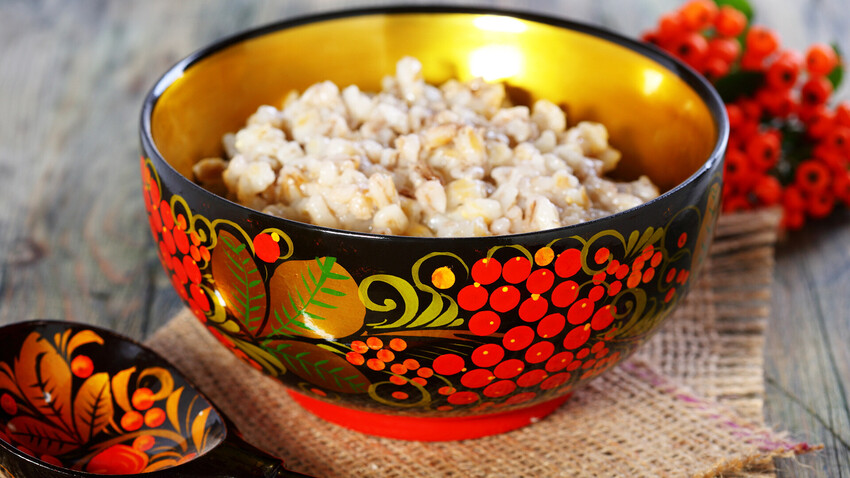
Russian porridge is equally tasty for breakfast, lunch and dinner.
Legion MediaKasha has long been considered as a staple dish of Russian cuisine. "Shchi and kasha is our food," "Kasha is our mother," "Buckwheat kasha is our mother and rye bread is our father," Russian proverbs say.
In the ‘Tale of Bygone Years’ (also known as the ‘Russian Primary Chronicle’) of the 12th century, the author describes how the great Russian princes made peace with the Polovtsy and celebrated it by eating porridge together. At that time, porridge was a solemn, ceremonial dish, which was prepared for weddings, christenings, Christmas and other important dates.
For example, 'kutia' - a porridge made of millet, rice or whole grain wheat flavored with raisins and honey - was prepared for funeral wakes. The grains in the 'kutia' are a symbol of the Resurrection and the honey and raisins are the sweetness and the joyful life enjoyed by the righteous in the Kingdom of Heaven. Being more luxurious in ingredients, 'kutia' (with milk and butter) was usually prepared for weddings and holidays.
In Russian cuisine, three types of porridge are traditionally distinguished by their consistency: thin gruel (or liquid porridge), gruel (or viscous porridge) and mealy porridge. Each type of porridge differs by the amount of liquid (water, milk or broth) used to cook it.
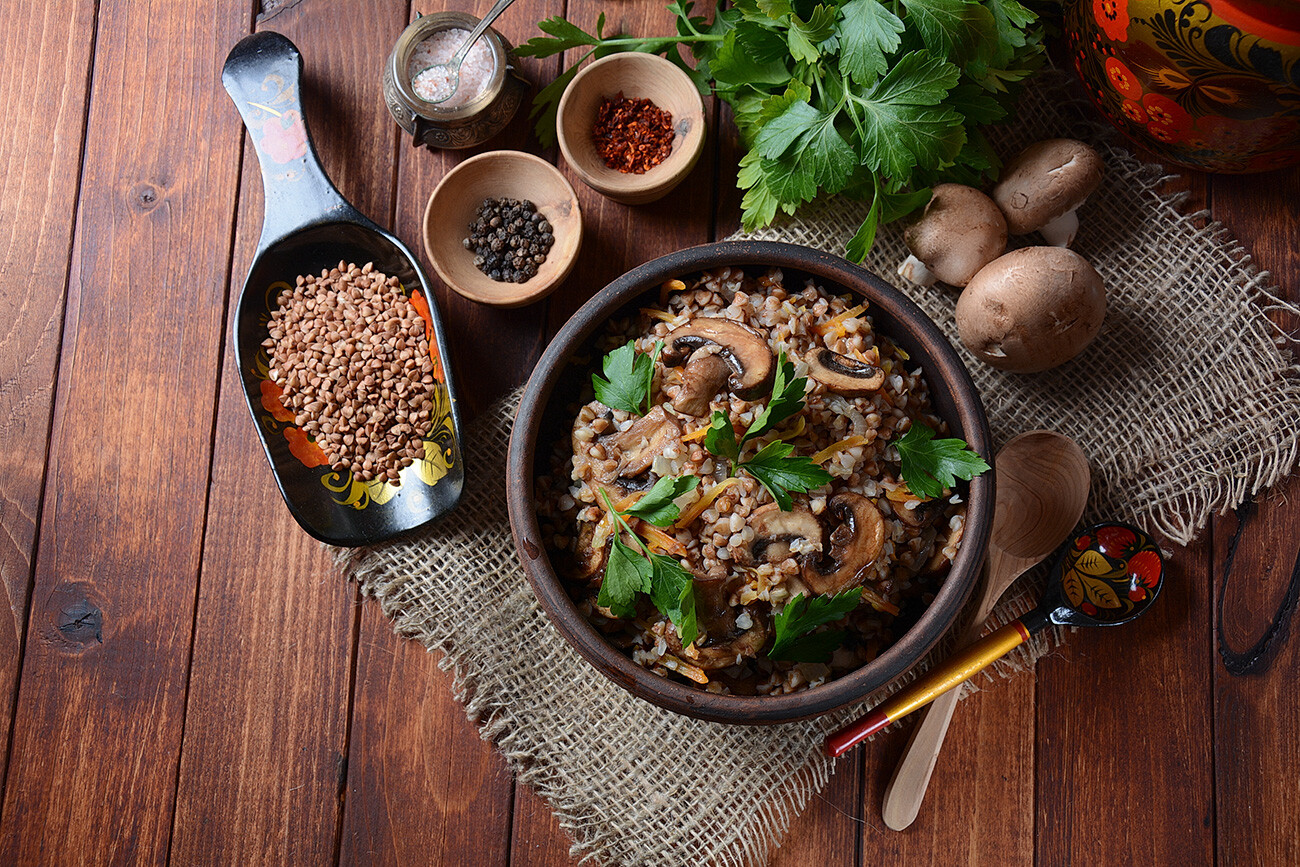
The most common Russian porridges to stand out are buckwheat, rice, millet, oatmeal and semolina.
According to one version of its origins, a thousand years ago, Russian princes brought buckwheat groats from their campaigns to Byzantium. But, it's only at the end of the 16th century when buckwheat porridge became a national Russian dish. And, since then, it has remained one of the most popular porridges.
Millet porridge, which is now perceived as one of the most budget-friendly side dish options, was once served as a festive dish. It was millet porridge baked in the oven (‘pschennik’) that was prepared for the monks of the Solovetsky monastery for Easter dinner. And, during the Great Patriotic War, ‘kulesh’ (millet porridge with brisket and potatoes) became the main dish of the field kitchen.
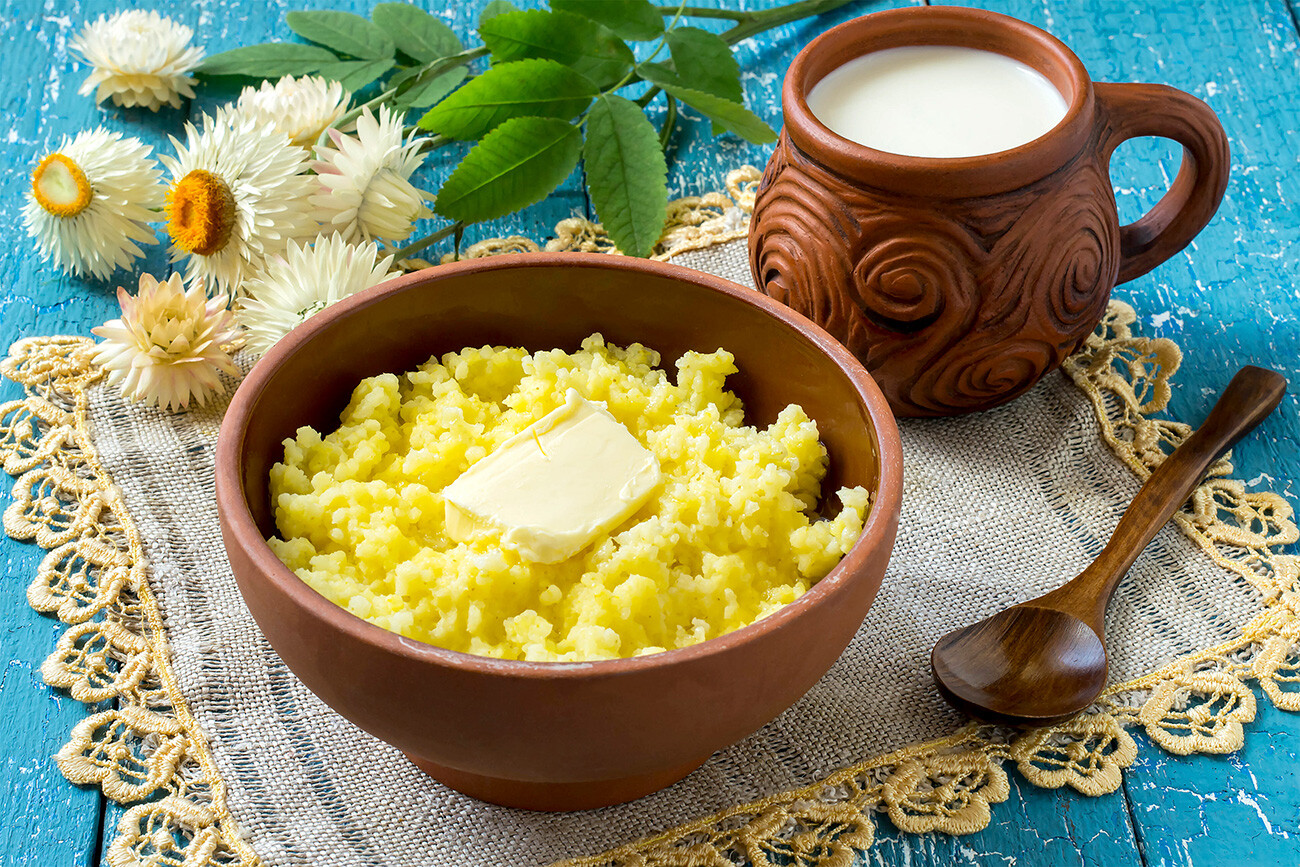
Once popular porridge made of spelt (semi-wild wheat), amaranth and barley are now practically out of the daily diet or have fallen onto the menu of fans of healthy eating. The outdated pearl porridge, which is made from ground barley grains, was once the favorite porridge of Emperor Peter the Great. Now, it can only be found in ‘rassolnik’ (a Russian soup with pickles).
Some types of "flour porridge" can be tasted nowadays, however, only in restaurants with traditional Russian cuisine or in certain regions of the country. We’re talking about 'katanka' (millet groats rolled first in egg and milk, then in flour), 'salamata' (fried flour porridge with sour cream, milk or kefir) and 'kulaga' (porridge made of rye flour and malt).
Depending on the desired consistency of the dish and the type of cereal, porridge is cooked with different amounts of liquid. For example, rice and millet porridge is cooked in a large amount of salted boiling water, then drained of excess water and finished in milk. For buckwheat porridge, first measure the amount of water twice the volume of the grains and evaporate without stirring. The ratio of water for oatmeal porridge should be 2 cups of groats - 3 cups of water. Boil it, stir and then add the milk until it evaporates.
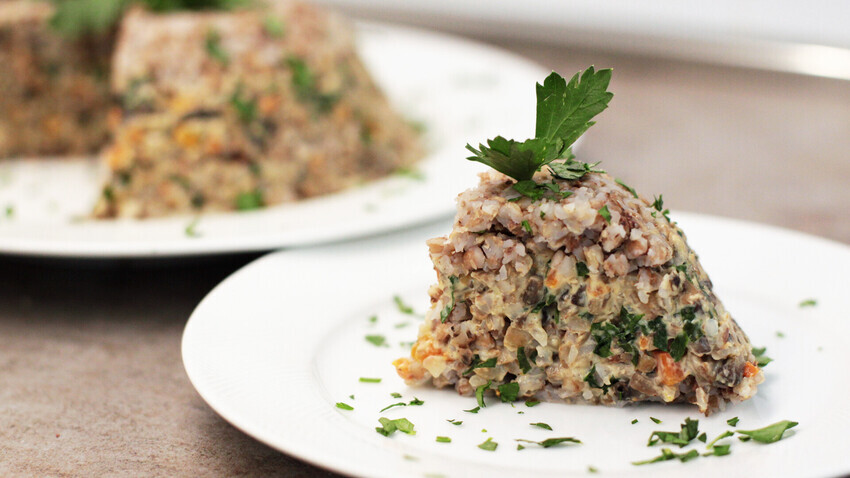
'Dragomirovskaya' porridge.
Victoria DreyTraditionally, porridge in Russia was eaten not only for breakfast, but also at any time of the day. In Old Russian times, it was considered a ceremonial and festive dish. We should explain that it was cooked in the oven, flavored with fresh milk and, as a result, it was a nutritious and tasty dish. In tsarist times, porridge recipes became more complicated – savory and sweet ingredients were added – from vegetables and mushrooms, meat and fish, to nuts and jam (for example, ‘Dragomirovskaya’ porridge with mushrooms in the form of a pie, ‘Guryevskaya’ porridge as a dessert, porridge with pumpkin and vegetables). In Soviet times, porridge became a useful and cheap side dish.
Nowadays, porridge still plays an important role in a Russian’s diet, both for breakfast and as a side dish for lunch or dinner.
Attitudes towards different types of porridge in Russia and other countries can also be influenced by the quality of the original product. For example, buckwheat groats, which are sold in many European countries, are more overcooked than those produced in Russia, so the flavor of the porridge may differ.
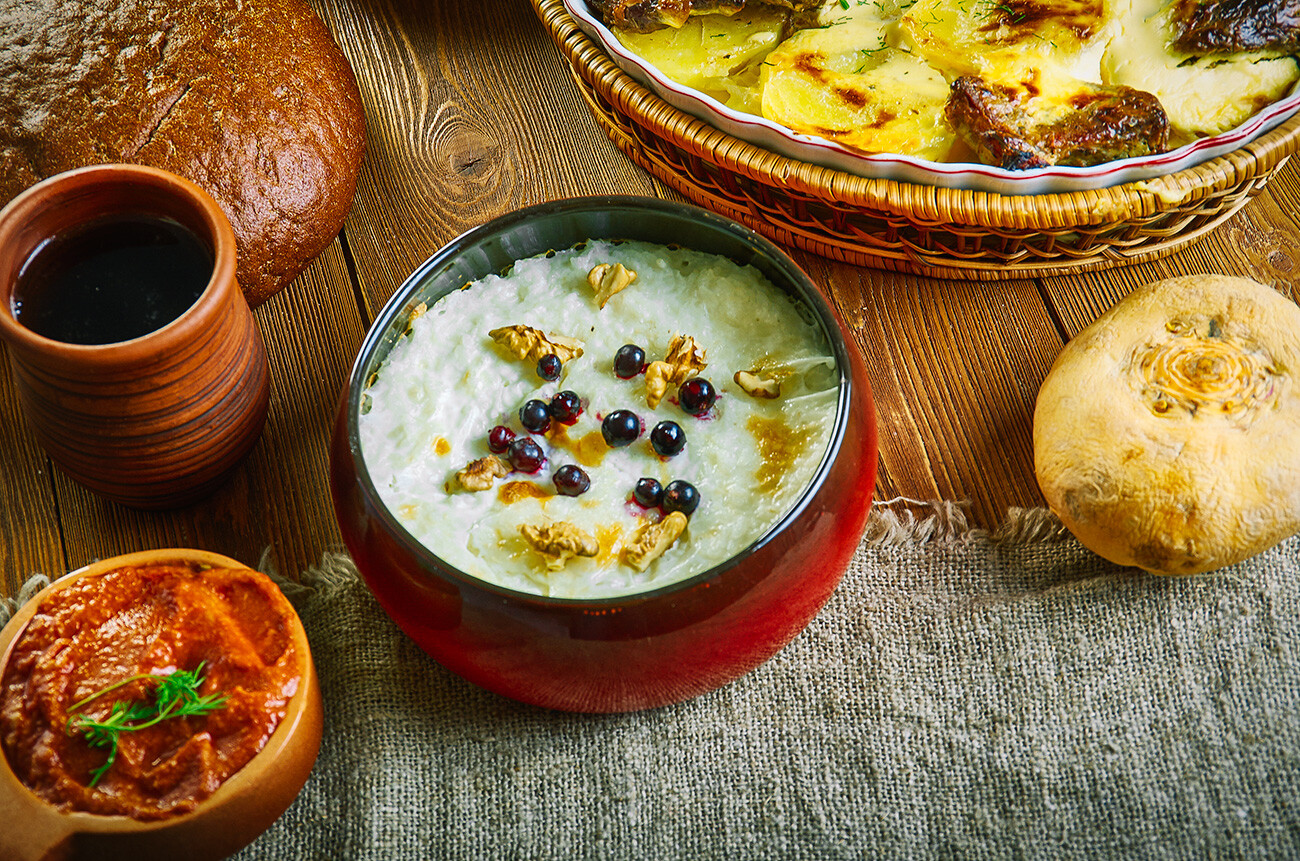
The flavor of porridge largely depends on what it is seasoned with. A folk proverb says: "You can't spoil porridge with butter!" Butter, indeed, is the most traditional addition. Porridge can also be flavored with drawn butter or vegetable oil – sunflower or linseed.
Dairy products are also added to porridge: milk, sour cream, cream, cottage cheese, cheese (for example, in Ossetia, they make ‘dzykka’ porridge with cheese, flour and sour cream).
Dried fruits – raisins, prunes, apricots – are also often put into the porridge, while pine nuts or walnuts can be sprinkled on top. And, of course, you can never spoil the porridge with honey and berries!
Dear readers,
Our website and social media accounts are under threat of being restricted or banned, due to the current circumstances. So, to keep up with our latest content, simply do the following:
Subscribe to our Telegram channels: Russia Beyond and The Russian Kitchen
Subscribe to our weekly email newsletter
Enable push notifications on our website
Install a VPN service on your computer and/or phone to have access to our website, even if it is blocked in your country
If using any of Russia Beyond's content, partly or in full, always provide an active hyperlink to the original material.
Subscribe
to our newsletter!
Get the week's best stories straight to your inbox